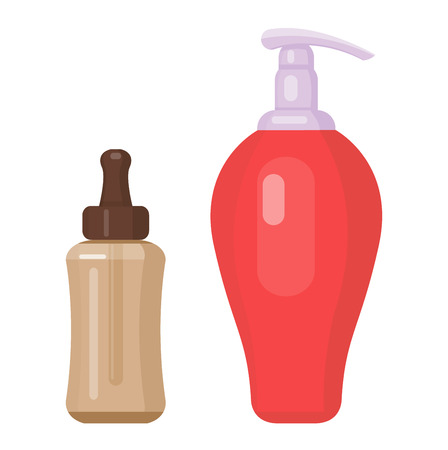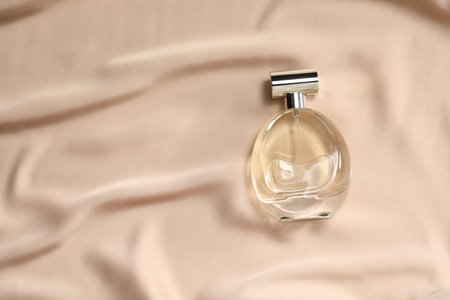Introduction to the British Perfume Landscape
From the windswept heaths of the countryside to the bustling streets of London, fragrance occupies a distinct and storied place in British culture. The UK’s relationship with scent is woven through centuries of history, from Elizabethan courts infused with rosewater and lavender, to Victorian gardens that inspired perfumers with their intricate botanical compositions. Today, perfume in Britain is more than just an accessory—its an expression of personality, mood, and even heritage. British preferences tend towards understated elegance: think crisp citrus top notes reminiscent of Earl Grey tea, or green herbal accords echoing freshly cut lawns and classic English gardens. Fragrance rituals—whether a spritz before a day at the office or the comforting smell of linen spray on a rainy afternoon—reflect both tradition and a modern desire for individuality. In this landscape, understanding the language of scent becomes essential for navigating not only the shelves of iconic perfumeries but also the subtle codes of everyday British life.
2. Understanding Fragrance Notes: The Basics Decoded
The art of perfumery in the UK is steeped in a language all its own, with “fragrance notes” forming the cornerstone of how scents are described, crafted, and appreciated. To truly navigate British perfume culture, it’s essential to decode these terms—especially the trio of top, heart, and base notes—that regularly appear in product descriptions, shop conversations, and even casual chats about signature scents.
Breaking Down Fragrance Notes
Fragrance notes refer to the distinct scent layers that unfold over time as you wear a perfume. Each note plays a specific role in creating the overall character and longevity of a fragrance. Understanding how these notes interact helps both seasoned enthusiasts and newcomers appreciate the complexity behind their favourite British perfumes.
| Note Type | Description | Common Ingredients (UK Examples) | Role in Fragrance |
|---|---|---|---|
| Top Notes | The initial impression; light and evaporate quickly. | Bergamot, lemon, mint, blackcurrant leaf (often found in classic British colognes). | Create the first impact; set the fragrances mood. |
| Heart Notes | The core; emerge once top notes fade. | Rose, lavender, jasmine (British roses and wildflowers are popular choices). | Shape the main personality; provide harmony. |
| Base Notes | The foundation; linger longest on the skin. | Cedarwood, oakmoss, patchouli (evoking British woodlands and heritage forests). | Add depth and lasting power; anchor the scent. |
The Language of Scent in British Perfumery
In British perfume culture, you’ll often hear references to these note categories when browsing at iconic shops like Penhaligon’s or Jo Malone. For example, a fragrance might be described as having “crisp citrus top notes reminiscent of a summer garden party,” or “deep woody base notes echoing an English forest after rain.” This vocabulary reflects not just olfactory qualities but also traditional British imagery and experiences.
Why Do Notes Matter?
Understanding this structure empowers you to choose fragrances that align with your personality or occasion. If you’re after something invigorating for daytime wear—perhaps for a stroll along the Thames—look for lively top notes. For evening events or cosy nights in a London pub, seek perfumes with richer base notes that linger warmly on the skin.
Navigating Perfume Descriptions Like a Brit
Whether shopping online or sampling scents at a local boutique, being familiar with top, heart, and base notes will help you decode descriptions such as “A timeless bouquet with green top notes and powdery heart accords” or “A modern classic boasting smoky base undertones.” This knowledge is your key to finding fragrances that resonate with both your preferences and quintessentially British style.

3. Classic and Contemporary British Scent Profiles
British perfumery is a fascinating blend of tradition and innovation, with scent profiles that are instantly recognisable yet constantly evolving. At the heart of classic UK fragrances are notes deeply rooted in the nation’s cultural landscape. The English rose, for example, stands as an enduring symbol of elegance—its soft, powdery sweetness frequently used in heritage scents from esteemed houses like Penhaligon’s and Floris London. Lavender, another quintessentially British note, brings a calming, herbaceous edge to both men’s and women’s colognes, echoing the rolling fields of Norfolk or Kent. Contemporary brands such as Jo Malone London have refreshed British perfumery by championing clean, minimalist compositions. Their use of Earl Grey tea—delicate bergamot intertwined with soothing black tea—evokes a modern sense of comfort and sophistication that resonates with the UK’s love affair with afternoon tea rituals. Meanwhile, niche labels like Miller Harris and Ormonde Jayne reinterpret classic ingredients with unexpected twists: think rhubarb paired with rose or hemlock layered over mossy bases. These brands not only highlight the versatility of British-grown botanicals but also reflect the UK’s openness to olfactory experimentation. Whether you’re drawn to vintage-inspired bouquets or crisp, contemporary blends, understanding these signature notes helps decode the unique language spoken by British perfumes.
4. How to Read and Interpret UK Perfume Descriptions
British perfume descriptions are often more than a simple list of notes—they’re a blend of poetic language, cultural references, and regionally inspired ingredients. Deciphering these nuances can help you make more informed fragrance choices and deepen your appreciation for the artistry behind each scent.
The Art of British Perfume Language
UK perfume houses frequently employ evocative and imaginative terms to describe their creations. Words such as “moorland breeze,” “London fog,” or “afternoon tea” evoke specific atmospheres rather than merely listing ingredients. Understanding these references can guide your expectations about the mood or occasion suited for each fragrance.
Common Poetic Terms & Their Meanings
| Term | Interpretation |
|---|---|
| Misty Hedgerows | Green, dewy, slightly earthy notes reminiscent of the British countryside after rain |
| Royal Velvet Rose | A luxurious, deep rose note often paired with powdery or musky undertones |
| Coastal Breeze | Fresh, aquatic accords with hints of sea salt or marine air, invoking the UK’s rugged coastlines |
| Afternoon Tea Accord | Soft gourmand notes like black tea leaves, scones, or citrus marmalade; comforting and nostalgic |
| Countryside Woods | Woody, mossy elements; think oakmoss, cedarwood, and damp forest floors typical in rural Britain |
Regionally Inspired Ingredients to Watch For
- English Lavender: Known for its clean, herbal aroma—often softer and less camphorous than French lavender.
- Cornish Sea Salt: Used for mineralic freshness in marine scents.
- Scottish Heather: Brings a wild, honeyed floralcy unique to UK landscapes.
- Kentish Apple: Crisp and tart notes reflecting traditional British orchards.
- Lancashire Moss: Adds an earthy, grounding base layer inspired by Northern England’s moors.
Tips for Decoding UK Perfume Labels
- Look Beyond the Obvious: British brands often use metaphorical language—consider the story or scene being painted.
- Check Ingredient Origins: Locally sourced elements add a sense of place and authenticity to the scent profile.
- Scent Structure Matters: Top, heart, and base notes may be described using traditional British references (e.g., “early morning dew” for top notes).
- Cultural Allusions: Be aware of nods to British heritage (like references to royalty, afternoon tea, or literary icons) as these hint at the intended wearer or mood.
Your Takeaway: Navigating British Fragrance Vocabulary
The next time you browse a UK perfume counter or website, take a moment to savour the language. Let poetic descriptions transport you to windswept moors or bustling London streets. With this new perspective, you’ll not only choose fragrances that suit your personal taste but also gain a richer appreciation for the cultural storytelling woven into every British scent.
5. Shopping for Perfume in the UK: Navigating Local Retail Culture
When searching for your signature scent in the UK, understanding the nuances of British retail culture can elevate your fragrance shopping experience. From language to etiquette, every detail contributes to how you interact with consultants and discover new perfumes.
Testing Fragrances: The Art of Sampling
In British department stores or boutique perfumeries, it’s customary to politely ask a consultant if you may sample a fragrance. Use phrases like “May I try this on my skin?” rather than directly spraying without permission. Most shops offer paper blotters (often called ‘scent strips’), but for a true sense of how a perfume develops, request to test it on your wrist or inner elbow—this is known as a ‘skin test’.
British Terminology to Know
- Eau de Parfum (EDP): A stronger concentration, often favoured for its longevity.
- Sillage: Used by UK consultants to describe the trail left by a fragrance.
- Dry-down: Refers to the final phase of a perfume’s evolution on the skin; feel free to ask, “What’s the dry-down like?”
Discussing Fragrances: Engaging Consultants
British sales staff are generally knowledgeable but respectful—avoid being overly assertive. Instead, share your preferences (“I tend to prefer fresh citrus scents” or “I’m looking for something warm and woody”) and listen to their suggestions. It’s perfectly acceptable to request time to consider your options; simply say, “I’d like to think about it,” or “Could I have a sample to try at home?”
Etiquette Tips
- Avoid wearing other strong scents when shopping, as this can interfere with testing new fragrances.
- If shopping with friends, keep conversations low-key—British shops value a calm and courteous atmosphere.
Making Your Choice: British Shopping Customs
The UK fragrance scene values patience and discernment. Take your time evaluating how each perfume evolves over an hour or two, especially as British weather can affect scent projection. Don’t feel pressured by consultants; they understand that choosing a perfume is highly personal. If you make a purchase, expressing gratitude with a simple “Thank you for your help” is always appreciated.
Summary: Embracing the Local Experience
Navigating perfume shopping in the UK means blending curiosity with classic British politeness. By using proper terminology, engaging thoughtfully with staff, and respecting local etiquette, you’ll not only find scents that suit your taste but also enjoy an authentic and memorable retail experience within the UK’s rich perfume culture.
6. Caring for Your Fragrance: Storage and Longevity Tips
In the UK, where the weather can be notoriously unpredictable—think sudden downpours, chilly winters, and the occasional warm spell—proper perfume storage is essential to preserving the integrity of your scent collection. British fragrance aficionados know that how you care for your perfume is almost as important as choosing the right notes.
Understanding the British Climate’s Impact on Perfume
The ever-shifting climate in Britain presents unique challenges for fragrance longevity. Dampness and fluctuations between central heating and cooler outdoor air can degrade delicate top notes and alter a perfume’s original composition. Humidity can particularly impact natural ingredients, causing oxidation or changing the way certain accords develop on your skin.
Top Tips for Storing Perfumes in the UK
- Avoid Direct Sunlight: British homes often have large windows to make the most of limited sunshine, but UV rays can break down perfume molecules. Store bottles in a shaded cupboard or drawer away from sunlight.
- Keep Away from Heat Sources: Radiators and heated towel rails are common in UK bathrooms and bedrooms. Heat accelerates evaporation and alters scent profiles, so opt for cool, consistent environments like a bedroom wardrobe or chest of drawers.
- Protect from Humidity: The UK’s damp air—especially in older homes—can infiltrate fragrances. Avoid storing perfumes in bathrooms or near windows; instead, choose a dry, ventilated spot.
- Preserve Original Packaging: Many British consumers keep their fragrances in their original boxes to shield them from light and temperature swings, maintaining both bottle appearance and scent quality.
Longevity Hacks from British Perfume Lovers
Bespoke fragrance wardrobes are on-trend among UK collectors. Some invest in small, lockable cabinets lined with velvet or soft fabric to prevent bottle scratches and further insulate against environmental changes. Decanting perfumes into smaller atomisers also helps preserve larger bottles while making it easy to carry your favourite scent on the go—a practical solution during daily commutes or weekends away in the countryside.
Quick Care Recommendations
- Tightly cap all bottles after use to limit oxidation
- Avoid shaking bottles vigorously—it introduces air and destabilises ingredients
- If you notice colour changes or off-odours, it may be time to retire that bottle
Caring for your fragrance collection isn’t just about preservation; it’s about respecting the artistry behind each scent. By understanding how Britain’s unique environment interacts with your perfumes, you’ll ensure every spritz remains true to its original intent—allowing you to enjoy your olfactory treasures season after season.
7. Conclusion: Embracing the Language of Scent in UK Culture
Understanding the intricate language and components of fragrance opens up a new dimension in appreciating British perfume culture. By decoding top, heart, and base notes—along with the evocative descriptions unique to the UK—we become more than just wearers of scent; we turn into informed curators of our own olfactory experiences. Recognising how perfumers blend classic ingredients like English rose, blackcurrant, or Earl Grey accords with innovative touches, allows us to connect with both heritage and modernity that define British perfumery. This knowledge not only refines your personal taste but also empowers you to select scents that resonate with your personality, lifestyle, and even the ever-changing British weather. Ultimately, embracing the language of scent enriches everyday rituals and deepens appreciation for the artistry behind each bottle, making every spritz a small celebration of UK culture and craftsmanship.


